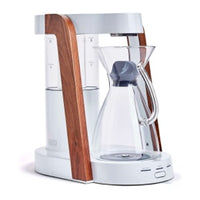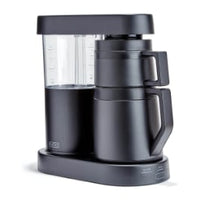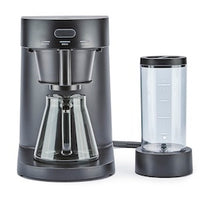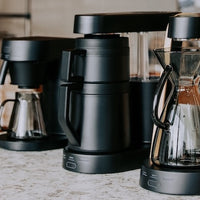Hot Water, Cold Mug: A Temperature Trap You Didn’t Notice
Key Takeaways
-
Pouring hot coffee into a cold mug can drop the drink’s temperature immediately
-
A lower starting temperature impacts flavor extraction and perception
-
Preheating mugs helps preserve optimal serving temperature and flavor quality
-
Cafés often warm cups before serving for consistency
-
Using a coffee machine with temperature stability maximizes the benefit of preheated cups
There’s a small but surprisingly impactful detail that can ruin the perfect cup of coffee: pouring it straight into a cold mug. The heat from your freshly brewed coffee doesn’t just stay put—it’s instantly transferred into the mug, which acts like a sponge for heat. This sudden temperature drop can take your coffee from vibrant and aromatic to muted and lukewarm in seconds.
Understanding why this happens and how to prevent it is one of the easiest coffee upgrades you can make at home.
The Science of Heat Loss
Coffee is best enjoyed within a specific temperature range, typically 155–175°F (68–80°C) for serving. This is warm enough to highlight the coffee’s natural sweetness and complexity, while still being safe to sip.
When you pour coffee into a mug that’s at room temperature—or worse, colder—the ceramic or glass quickly absorbs heat. Even a drop of 10–15°F (5–8°C) can change your perception of the brew’s flavor. Aromas may seem less intense, acidity can feel sharper, and the body of the coffee may appear thinner.
Why Temperature Matters for Flavor
Flavor perception is highly tied to temperature. Hotter coffee tends to emphasize sweetness and body, while cooler coffee highlights acidity and bitterness. While it’s natural for coffee to cool over time, starting at a lower temperature means you experience less of its full flavor range.
This is especially important if you’ve invested in high-quality beans—those subtle floral or chocolatey notes you paid for can be dulled almost instantly by a cold mug.
How Cafés Avoid the Problem
Walk into a specialty coffee shop and you might notice baristas rinsing mugs or cups with hot water before pouring in coffee. This isn’t a flourish—it’s a practical step to maintain consistency and quality.
Preheating benefits include:
-
Preserving brew temperature for longer
-
Reducing initial heat loss
-
Keeping milk-based drinks at ideal serving warmth
At home, this step is often skipped, but it’s one of the easiest to implement.
How to Preheat Your Mug at Home
It takes less than 30 seconds to set yourself up for a better coffee experience:
-
Boil water in your kettle (or run your coffee machine’s hot water cycle)
-
Fill your mug about halfway with hot water
-
Let it sit for 20–30 seconds
-
Discard the water and pour your freshly brewed coffee
This simple ritual ensures your coffee starts at its peak and stays there longer.
Pro Tip:
If you brew directly into a mug, preheat it before brewing to avoid pulling heat from the coffee as it lands.
Material Matters
Different mugs retain heat differently:
-
Ceramic: Good overall heat retention, but benefits from preheating
-
Glass: Loses heat faster unless double-walled
-
Stainless steel: Excellent insulation, especially in vacuum-sealed designs
Even insulated mugs benefit from a quick preheat—it maximizes the time your coffee stays at the ideal drinking temperature.
Serving Size and Heat Loss
A larger mug with more surface area will lose heat faster than a smaller one. If you tend to sip slowly, opt for smaller servings and refill as needed, keeping the rest of your coffee warm in a thermal carafe.
The Psychological Factor
Temperature isn’t just physical—it’s psychological. A warm mug feels more comforting to hold, enhancing your overall coffee experience. This small tactile element can make your morning ritual feel more like the café experience you love.
When Temperature Stability Really Counts
For certain brewing methods—like pour-over or manual espresso—the margin for temperature loss is slim. A sudden drop can upset the extraction balance, making coffee taste sharper or flatter than intended.
This is where a coffee machine with excellent temperature stability comes in. It ensures your brew starts at the right temperature, and a preheated cup ensures it stays there.
The Ratio Coffee Approach
Using a coffee machine from Ratio Coffee gives you the confidence that your brew is hitting precise, consistent temperatures. Pair that with preheated mugs, and you’ll enjoy the coffee exactly as it was meant to taste—from the first sip to the last.
Making It a Habit
Like grinding fresh beans or measuring your coffee, preheating your mug should become part of your routine. It’s quick, easy, and delivers an immediate improvement in the taste and feel of your coffee.
The next time you brew, don’t let a cold mug steal the spotlight from your hard work. Warm your cup, and let your coffee shine.
Frequently Asked Questions
Does preheating matter for iced coffee?
Not in the same way—but pre-chilling glasses for iced coffee can help maintain temperature.
Can I preheat with coffee instead of water?
Yes, you can use the first few ounces of coffee to warm the cup, then pour it back into the brewing vessel before serving.
Is there a risk of cracking glass mugs with hot water?
Yes—if the glass is not heat-safe. Always check manufacturer guidelines.
Will preheating mugs make a difference with milk-based drinks?
Absolutely. Milk cools coffee quickly, so starting with a warmer cup keeps the final drink at the right temperature longer.
How long will preheated mugs keep coffee hot?
It depends on the material, but generally 15–30% longer than unheated mugs.
 Ratio Eight S2
Ratio Eight S2
 Ratio Eight Original
Ratio Eight Original
 Ratio Six
Ratio Six
 Ratio Four
Ratio Four
 Compare Machines
Compare Machines






